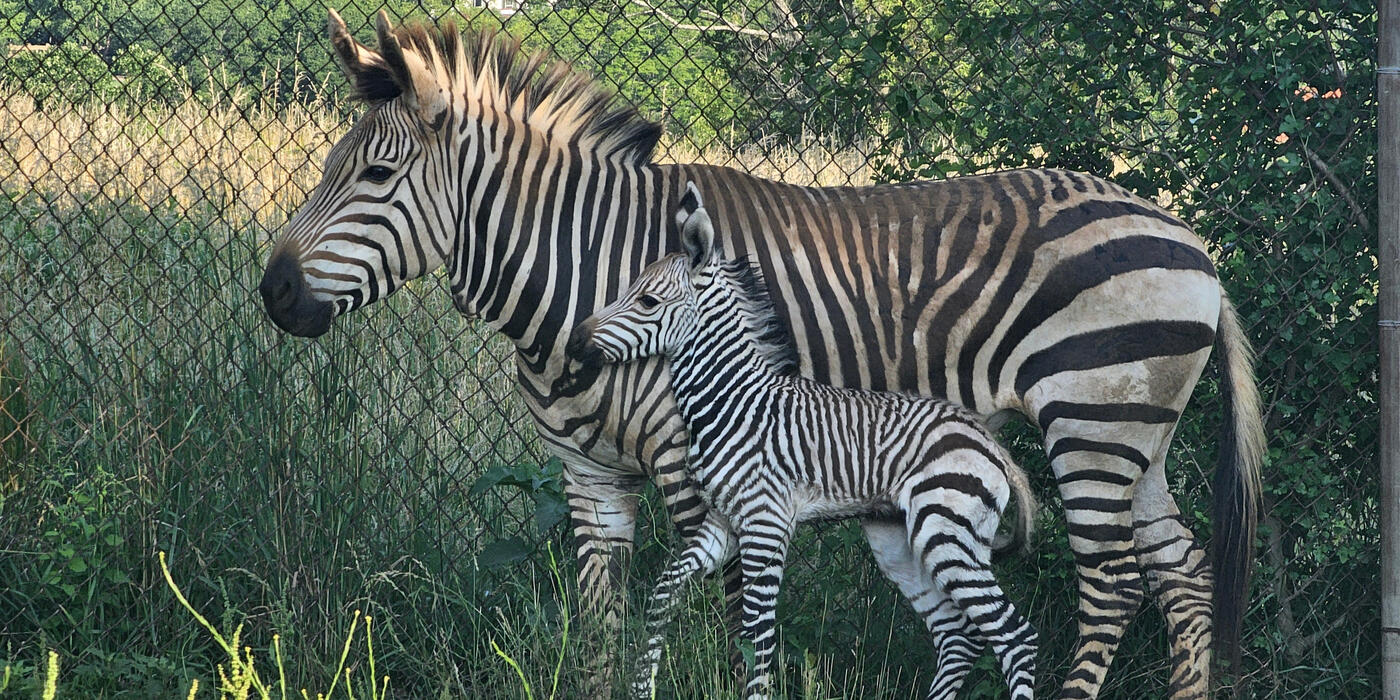Taking a Closer Look at Takhi on National Day of the Horse

In 2004, the United States Congress designated Dec. 13 to be “National Day of the Horse” - an opportunity to recognize the outsized role domesticated horses have played in human history. But for this year’s Day of the Horse, we’re taking a different tack, if you will, to recognize the Przewalski’s horse.

Przewalski's horses, including a foal drink from a watering hole in Kalamaili Nature Reserve.
The Przewalski’s Horse (pronounced shah-VAL-skee), also known as takhi in Mongolian and yema in Mandarin, is a species believed to be the last of the truly wild horses in the world. Although they once roamed the Eurasian steppe, or grassland plain, these stocky, dun-colored horses went extinct in the wild in the 1960s due to human interference, such as poaching and use of their habitat for livestock.
Luckily, 14 Przewalski’s horses were caught in the wild and brought into human care in order to save the species. Breeding programs bolstered numbers, providing the capacity to eventually reintroduce herds to the wild. Smithsonian conservation biologist Mel Songer first began her work with the species in 2007, when she was invited to the Kalamaili Nature Reserve in northwestern China to assist with a reintroduction program.
“I was thrilled to have that opportunity for many reasons,” Songer said. “Working at the Smithsonian’s National Zoo and Conservation Biology Institute, I had the chance to be surrounded by endangered species and see the work that goes into building and growing healthy populations under human care. This was an opportunity to be part of getting a species that has gone extinct in the wild back into their native habitat. And the fact that it was a flagship species for the Smithsonian’s conservation efforts was a bonus.”
Mel Songer (left) works with team members and park staff to place a GPS collar on a wild Przewalski's horse in Hustai National Park in Mongolia.
We Need Science
One of the key elements to a successful reintroduction is building a scientific framework.
“If we want to contribute to species and ecosystem restoration, we need science,” Songer said. “We need to be able to study how species adapt, and how ecosystems are impacted by animals and people. What we learn helps us to improve the success of a restoration project and the overall sustainability of a system.”
Songer and her colleagues brought an expertise in satellite tracking of animals to Kalamaili and later to Hustai National Park, near Ulaanbaatar, Mongolia. Using GPS tracking devices, scientists monitored and visualized the movement of individuals to understand the animals’ ecology, their habitat needs and their movements across the landscape.
Like other ungulates, Przewalski’s horses live in social groups consisting of several mares and a singular stallion. In Hustai, researchers tracked groups, known as harems, consistently for nearly a decade. By 2017, scientists realized the horses weren’t using the full extent of the protected area, instead sticking to roughly a third of the park.
Was it a lack of food or water, or other unrecognized threats causing the horses to choose to stay in certain areas? Scientists estimated the park’s carrying capacity to be roughly 500, but the existing population was stalling around 350 individuals.
“We have tried adding artificial water holes, but so far we have not figured out why they aren’t expanding their range or how to help their population grow,” Songer said. “But science alone cannot solve complex conservation challenges. It takes a village to save a species.”

Wild Przewalski's horses drink from the Sangequan River in Kalamaili Nature Reserve in Xinjiang, China.
The Human Element
In the Kalamaili Nature Reserve, scientists began monitoring and conducting ecological research of reintroduced Przewalski’s horses in 2001. When the horses were first released during the winter of 2001, they faced steep challenges, in part because it was an especially difficult winter.
“Winter is a challenging time for the horses, because there’s less forage and it’s very cold,” Songer explained. “The first year they were released, there were five horses that didn’t survive. They were naïve; being born in a breeding center they had never experienced the challenges of finding food in winter.”
The horses also faced competition during the sub-zero winters, as livestock herders moved their domesticated animals into the same pastures the Przewalski’s horses were occupying.
“These herders had been using these pastures for generations,” Songer said. “But what we realized when we started interviewing community members [several years later] is that nobody really talked to them about the reintroduction project. Yet, they were the ones most impacted by the project, and that would have the most impact on whether it would be a success.”
Thankfully, the livestock herders were excited by the prospect of helping the species return to the lands. Eventually some community members even became park rangers and directly participated in conservation efforts and monitoring of the horses, especially during the winter months.
Songer says this situation is a key example of why it’s fundamental to build the capacity for project staff and communities. Training individuals in monitoring methods, such as tracking, camera trapping, and vegetation sampling not only creates buy-in for local communities, but it can also provide economic opportunities. Additionally, it provides a safeguard in case scientists cannot be in a region consistently, whether due to funding, geo-political changes or even global health pandemics.
Despite the difficulties associated with reintroducing species, it's been a driving force for Songer’s career. She’s been involved with several species' reintroductions, including successful projects involving scimitar-horned oryx and addax in Chad.
“From my perspective there is nothing more inspiring than seeing a species return to the wild,” she said. “It’s the heart of a lot of the work that I’m doing. […] And it’s inspiring to think about all the different people and efforts the come together to make it possible.”
Related Species:



